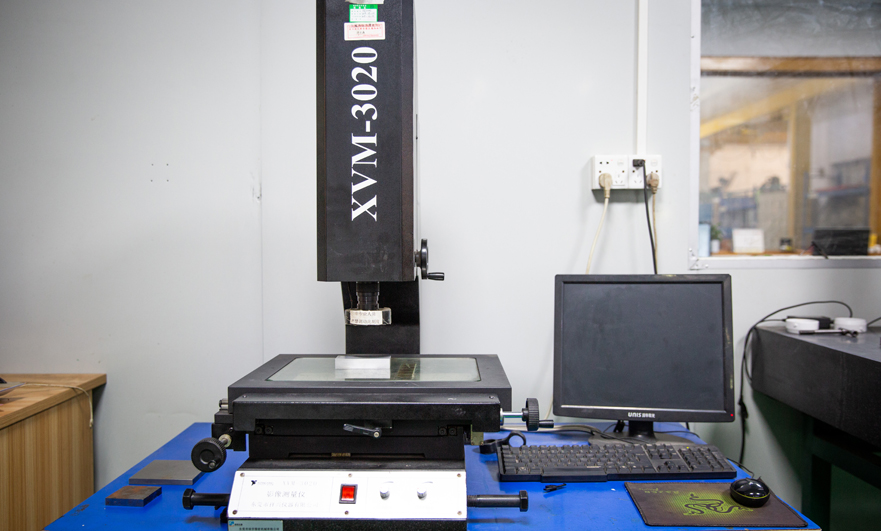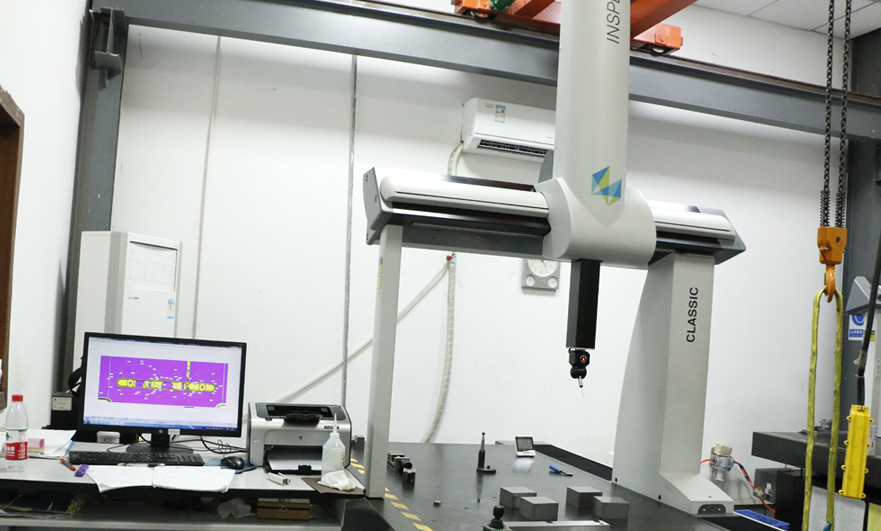15 years one-stop China custom CNC machining parts factory

Hey there I’m VMT Sam!
With 25 years of CNC machining experience we are committed to helping clients overcome 10000 complex part-processing challenges all to contribute to a better life through intelligent manufacturing. Contact us now
 651 |
Published by VMT at Dec 17 2021
651 |
Published by VMT at Dec 17 2021
Measuring tool is a measuring tool and means for the CNC machining workshop to ensure the quality of CNC machined parts. The accuracy of the measuring tool determines the precision control of the CNC machined parts. If the accuracy of the measuring tool is not enough, the measurement results are not accurate, and it is impossible to truly confirm whether the CNC machined parts are qualified or not. . Commonly used measuring tools: ordinary caliper, digital caliper, depth caliper, caliper with dial indicator, micrometer (inner diameter, outer diameter), depth micrometer, tooth thickness normal micrometer, height gauge, ordinary depth gauge, feeler gauge, internal and external thread gauge , R gauge, dial indicator, dial indicator, gauge block gauge, roughness control sample block, altimeter, projector, three-dimensional coordinate, two-dimensional, etc.
Before each measurement, you need to select measurement tools according to the special characteristics of the measured CNC machined parts, such as length, width, height, depth, outer diameter, step difference, etc. You can choose calipers, height gauges, micrometers, and depth gauges; shaft diameters can be used Choose micrometers and calipers; plug gauges, block gauges, feeler gauges can be used for holes and grooves; squares can be used for measuring the straight angle of CNC machined parts; R gauges are used for measuring R values; measuring fit tolerances are small, high accuracy requirements or calculations are required Three-dimensional and two-dimensional can be selected for position tolerance; hardness tester can be used to measure the hardness of steel. VMT is a CNC machining parts service factory with more than ten years of CNC machining experience. It has complete equipment, CNC turning/milling/grinding/drilling/processing. Partners with CNC machining parts requirements are welcome to contact us for quotation.

1. The application of calipers
Calipers can measure the inner diameter, outer diameter, length, width, thickness, step difference, height, and depth of CNC machined parts; calipers are commonly used and easy to use measuring tools, and are used frequently in CNC machining sites.
Digital caliper: 0.01mm resolution, used for size measurement with small fit tolerance (high precision).
Table card: resolution 0.02mm, used for conventional size measurement.
Vernier caliper: resolution 0.02mm, used for rough machining measurement.
2. Application of Micrometer
Before using the micrometer, you need to use clean white paper to remove dust and dirt (use a micrometer to measure the contact surface and screw surface to jam the white paper and then pull it out naturally, repeat 2-3 times), then twist the knob to measure the contact When the surface of the screw is in quick contact with the screw surface, use fine adjustment. When the two surfaces are in full contact, adjust the zero, and then the CNC machining parts can be measured.
When the micrometer is measuring the CNC machined parts, adjust the knob. When the CNC machined parts are quickly touched, use the fine-tuning knob to rotate in. When you hear the three sounds of click, click, and click, stop, and read the data from the display or scale. When measuring plastic products, the measuring contact surface and the screw lightly touch the product.
When using a micrometer to measure the diameter of a shaft-like CNC machined part, measure at least two directions and take the micrometer in the Z-maximum measurement section. The two contact surfaces should be kept clean at all times to reduce measurement errors.
3. Application of height gauge
The height ruler is mainly used to measure the height, depth, flatness, perpendicularity, concentricity, coaxiality, surface vibration, tooth vibration, depth, and height ruler of the CNC machined parts. When measuring, the probe and the connecting parts must be checked first. No looseness.
4. Application of feeler gauge
The feeler gauge is suitable for the measurement of flatness, curvature and straightness of CNC machined parts
Flatness measurement:
Place the CNC machined parts on the platform, and use a feeler gauge to measure the gap between the CNC machined parts and the platform (note: the feeler gauge and the platform should be kept pressed tightly without any gap during measurement)
Straightness measurement:
Place the CNC machined parts on the platform and make one revolution, and use a feeler gauge to measure the gap between the CNC machined parts and the platform.
Curvature measurement:
Place the CNC machined parts on the platform, and select the corresponding feeler gauge to measure the gap between the two sides or the middle of the CNC machined parts and the platform.
Verticality measurement:
Place one side of the straight angle to be measured on the platform, and place the square square against it on the other side, and measure the Z gap between the part and the square with a feeler gauge.
5. Application of plug gauge (stick needle)
It is suitable for measuring the inner diameter, groove width and clearance of holes.
CNC machining parts have a large aperture. When there is no suitable needle gauge, the two plug gauges can be overlapped, and the plug gauge can be fixed on the magnetic V-shaped block according to the 360-degree direction to prevent loosening and easy to measure.
6. Precision measuring instrument: two-dimensional
The second element is a high-performance, high-precision non-contact measuring instrument. The sensing element of the measuring instrument is not in direct contact with the surface of the measured CNC machined part, so there is no mechanical measuring force; the second element uses the projection method to transmit the captured image to the computer data acquisition card through the data line , And then imaged on the computer monitor by the software; various geometric elements (points, lines, circles, arcs, ellipses, rectangles), distances, angles, intersections, geometric tolerances (roundness, straightness, parallelism) on the parts , Verticality, inclination, position, concentricity, symmetry), and can also be used for CAD output for 2D drawing of contour. Not only can the contour of the workpiece be observed, but also the surface shape of the opaque CNC machined parts can be measured.
Observation of electrode processing surface: The lens of the two-dimensional element has the function of magnification for roughness inspection after electrode processing (image magnified 100 times).
Gate inspection: In the CNC machining of molds, there are often some gates hidden in the groove, and various testing instruments cannot measure. On the mortar, use the second dimension to measure the size of the mortar mark to get the gate size.
Note: Because there is no mechanical force during the two-dimensional measurement, try to use the two-dimensional measurement for thinner and softer CNC machining parts.

7. Precision measuring instruments: three-dimensional
The characteristics of the three-dimensional element are high precision (up to μm level); universal (can replace a variety of length measuring instruments); can be used to measure geometric elements (in addition to the elements that can be measured by the two-dimensional element, it can also measure cylinders and cones) , Form and position tolerance (in addition to the form and position tolerance that can be measured by the two-dimensional measurement, it also includes cylindricity, flatness, line profile, surface profile, and coaxiality), complex surface, as long as the three-dimensional probe Wherever it can be touched, its geometric size, mutual position and surface profile can be measured; and data processing can be completed with the help of a computer; with its high precision, high flexibility and excellent digital capabilities, it has become a modern mold numerical control manufacturing and quality assurance Important means and effective tools.
Some molds are being modified without 3D graphics files. The coordinate values of various elements and the contours of irregular surfaces can be measured, and then exported by CNC machining part drawing software and made into 3D graphics based on the measured elements, which can be fast and error-free Numerical control processing and modification (after coordinate setting, any point can be taken to measure the coordinate value).
VMT CNC machining parts service company is equipped with complete precision CNC machining equipment, CNC machining machine tools, and testing equipment. It has more than ten years of experience in precision CNC machining parts. In the process of high-precision CNC machining parts, we pay attention to the full inspection of product quality and CNC machining. The quality of parts is strictly controlled, which can provide one-stop service that saves worry and effort.
3D digital model import comparison measurement: In order to confirm the consistency of the CNC machined parts with the design or find the matching abnormality during the assembly process, when some curved surfaces are neither arcs nor parabolic, but some irregular curved surfaces When geometric element measurement is not possible, you can import the 3D model to compare and measure the CNC machining parts, so as to understand the CNC machining error; because the measured value is a point-to-point deviation value, it can facilitate rapid and effective correction and improvement (shown in the figure below) The data is the deviation between the measured value and the theoretical value).
Ready To Start Your Next Project?
Get Instant Quote

Request a Free Quote
Send us a message if you have any questions or request a quote. We will get back to you ASAP!